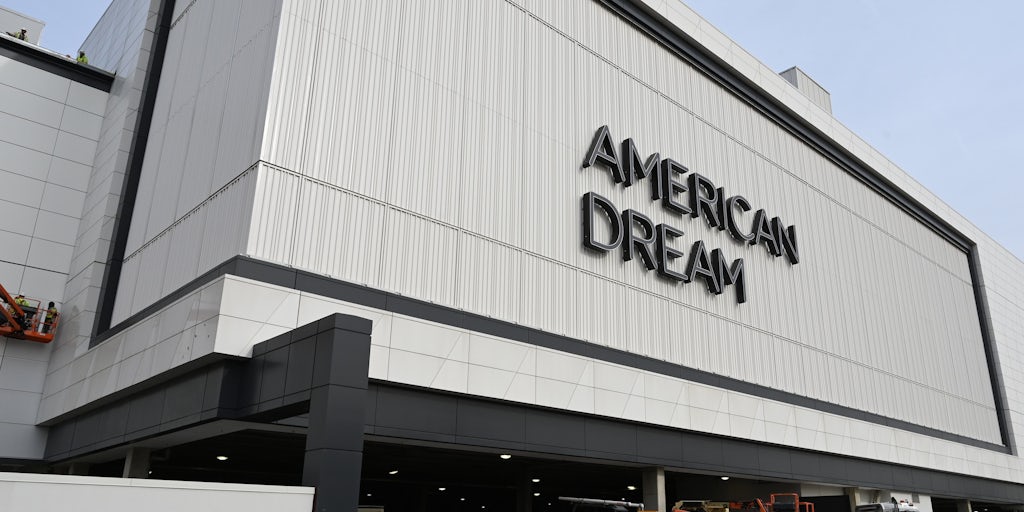Gen Z is trading in fast-fashion clothing hauls for #thriftflips – Glossy
Just as Gen Z has moved away from millennial pink, in favor of bright and fun colors, the demo is beginning to trade in fast fashion #clothinghauls for #thriftflips.
The number of posts across social platforms and blogs that were tagged #ThriftFlip increased 236% between the second quarter of 2019 and the first quarter of 2020, according to Tribe Dynamics. Meanwhile, #ClothingHaul increased just 26%.
Six of the ten highest-performing posts tagged #ThriftFlip were made on TikTok or referenced a TikTok post, which corresponds with Gen Zers’ new preference for TikTok over older platforms like Instagram. In fact, Piper Sandler‘s latest Semi-Annual Generation Z insights survey, of 7,000 U.S. teens, revealed that those considering Instagram their favorite social platform has decreased from 35% in Fall 2019 to 24% in Spring 2021. Tiktok surpassed Instagram this spring, at 30%.
“TikTok, which became so popular during the pandemic, is something that is rough around the edges and gives people an actual peek into real life and the humanity behind people or, in our case, founders,” said Jensen Neff, 22, co-founder of sustainable clothing brand Oddli.
Last June, Neff and Ellie Chen, 23, founded Oddli, which uses deadstock fabric from the fashion industry.
“In college, you buy something that has one-day shipping from Zara or Amazon, and you have no idea where it came from,” said Chen. “We felt like there was not really a sustainable alternative that was speaking to the color and the energy that we wanted to be a part of.”
Oddli’s products include halter tops, shorts and bucket hats made of colorful patchwork.
Neff said that Oddli’s audience wants “to follow the story of two young women building a brand from the bottom up.” TikTok allows them to do that while also serving as “an amazing free marketing tool” for the brand, she said.
Oddli’s first post, which has amassed 2 million views since it was posted in August 2020, is set to the popular TikTok song “Backyard Boy.” Neff’s voiceover includes hard-hitting facts, like, “Every time you buy a T-shirt, you use, on average, the amount of water a human uses in three years.” At the same time, viewers are given a behind-the-scenes look at Oddli’s development.
“The most important thing that we have to do in our generation is tackle climate change,” said Neff. “And TikTok is incredible for education.”
After featuring their story on TikTok, Neff and Chen launched their first collection, garnering around $52,000 in pre-orders via Kickstarter. The duo is currently preparing to launch their second line this summer.
Gabriella Meyer, 25, has had similar success in using TikTok to expand the reach of her brand Denimcratic.
Meyer started Denimcratic as “a commentary on the democratization of blue jeans” for her senior thesis at the University of Michigan, before turning it into a business in July 2017.
Two years later, Meyer created a TikTok account for her brand. Its first post has since amassed over 280,000 total likes and 1.2 million views. The video showcases her process of making custom pieces with repurposed denim.
“All of my friends were like, ‘You’re so weird [because] you got a TikTok.’ And I was like, ‘You guys, just you wait. No one in fashion is on it yet, and it’s gonna be a thing,’” said Meyer.
Prior to starting Denimcratic’s TikTok account, Meyer had already begun to develop a stable customer base. That was largely thanks to celebrities who had purchased and worn her pieces publicly, including Jhene Aiko, SZA and Bella Hadid — the latter posted her custom Denimcratic bustier on Instagram.
Meyer, however, doesn’t minimize the impact of TikTok on her brand in the past year.
On April 13, TikTok user @courtneykaskey posted a photo of Hailey Baldwin in a top from Denimcratic’s knit collection captioned, “found the brand of this top hailey baldwin wore.” The video, which has over 46,000 views, came as a surprise to Meyer.
“We got this huge surge on our Instagram and online store,” said Meyer, who revealed that the company saw a 660% increase in sales at the time. “But we weren’t tagged in anything, so I had no idea. And then someone the other day was like, ‘Oh, did you see that TikTok?’”
Fittingly for Gen Z’s activist archetype, the shirt reads “Voting is hot” and is made of recycled cotton t-shirts.
According to Meyer, her knit collection is affordable, with a price range of around $50-$100, allowing for the younger demographic to support Denimcratic. Comparatively, the brand’s denim pieces, most of which range from around $80-$300, are more labor-intensive to make and, therefore, more costly.
A 2019 Forbes report revealed that 59% of Generation Z would purchase upcycled products. While sustainability is a key factor in the resonance among Gen Z of brands like Denimcratic and Oddli, the designers’ ability to create wearable, desirable and unique pieces of clothing is needed to clinch the sale.
“I want someone to see a piece and be like, ‘Wow, this is amazing, I want to buy it,’ and then for them to [realize], ‘Oh my God, it’s also sustainable,’” said Meyer. “I don’t want the message to be that if you choose to shop sustainably you’re gonna get more generic clothing.”

